Dental Health in your Pet: Everything you should know
HEALTH & PROTECTION
20 Nov, 2022
5 minutes
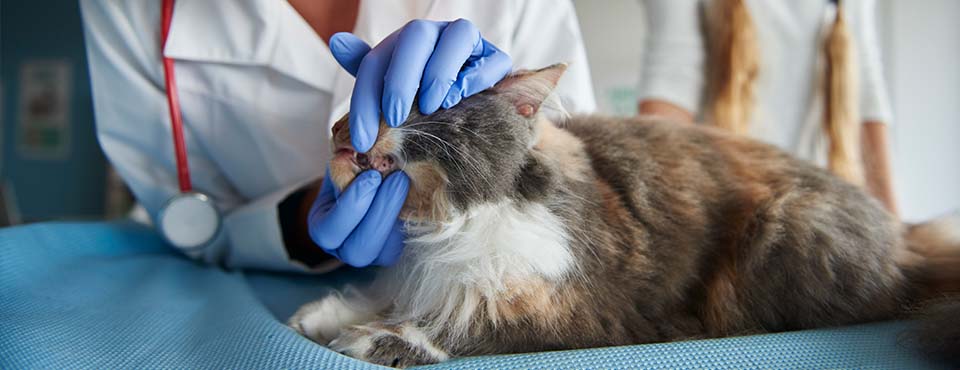
Did you know that dogs and cats can suffer from dental issues just as humans do? In fact, it is estimated that 80 % of dogs and 70 % of cats will show signs of oral disease by age 3. Dental ailments in pets are quite common, but the key to managing these diseases (for humans and pets!) is prevention.
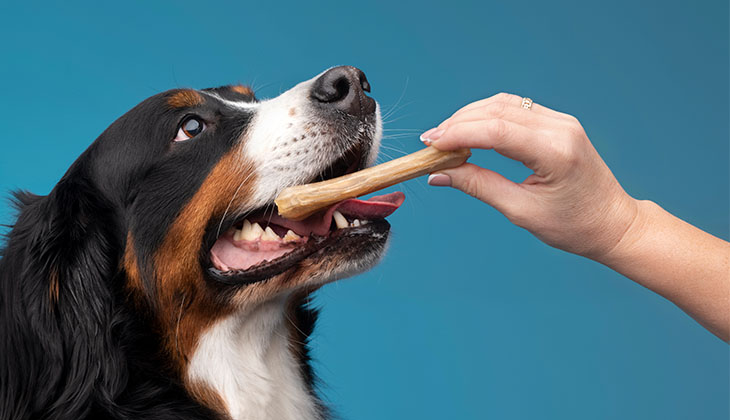
What causes dental disease in my pet?
The cause of gum disease in cats and dogs is the same as it is in humans. Gum disease is an infection resulting from build-up of soft dental plaque on the surfaces of the teeth and around the gums. This plaque contains bacteria and food particles. Plaque that stays on the teeth hardens into tartar which can remain on the surface of the teeth and continue to grow below the gumline, causing inflammation and infection. Dental disease affects the teeth, gums and structures that support your pet’s teeth. If plaque and tartar are not removed and infection results, dogs and cats can experience serious dental problems and pain.
What are some signs of dental disease in my cat or dog?
- Broken teeth
- Loose teeth
- Bad breath
- Painful and/or bleeding mouth and becoming head shy due to pain
- Refusal or inability to eat and drink eating slower or favouring one side of the mouth
- Drooling
Why pet dental care is important
Just as you have your pet vaccinated against diseases, you want your pet to have a healthy mouth to prevent other health problems. Here are a few reasons why good dental care is so important to your pet’s overall health:
- Prevention of tooth loss. Good dental care will ensure that the structures supporting your cat or dog’s teeth won’t become damaged or infected.
- Prevention of bad breath (halitosis). When your dog or cat has a healthy mouth, his/her breath won’t be a problem.
- Prevention of oral pain. Keeping your pet’s teeth and gums healthy will help prevent pain from dental disease, which can be quite painful.
- Prevention of organ damage. Bacteria from the plaque in your pet’s teeth can enter the bloodstream and spread to the heart, kidneys, and liver. This spread of bacteria, called bacteremia, can damage organs, and make your pet quite sick.
- Prevention of worsening dental disease. Good pet dental care can prevent any existing dental disease from becoming severe and causing problems throughout the body.
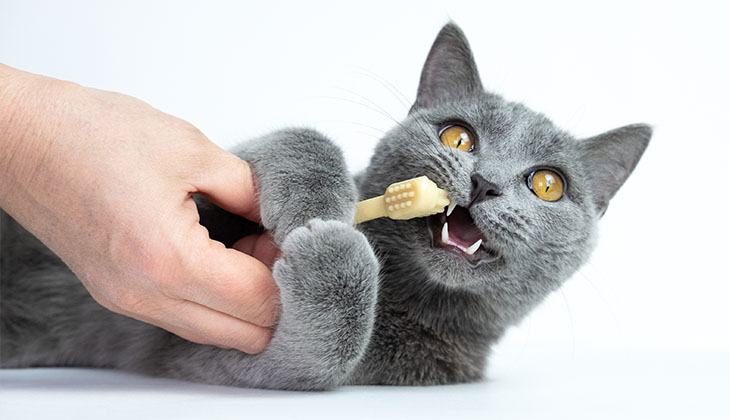
How can I keep my pet’s teeth clean and healthy?
Excellent oral health for your pet includes not only annual professional dental cleanings, done at a veterinarian’s office, but also regular at-home dental care.
Here are a few things you can do at home to help maintain a healthy pet mouth:
- Brush your pet’s teeth. Brushing your cat or dog’s teeth every few days is a great way to maintain oral hygiene. Remember, never use toothpaste meant for humans.
- Wipe your pet’s teeth. Not all cats and dogs will tolerate or allow their teeth to be brushed. For these furry friends, you can wipe the teeth with a gauze at least every two to three days, which will remove plaque.
- Give your pet dental treats and toys. There are several treats and toys for cats and dogs on the market that remove plaque as they chew. Daily chewing activities can also be effective in maintaining oral health.
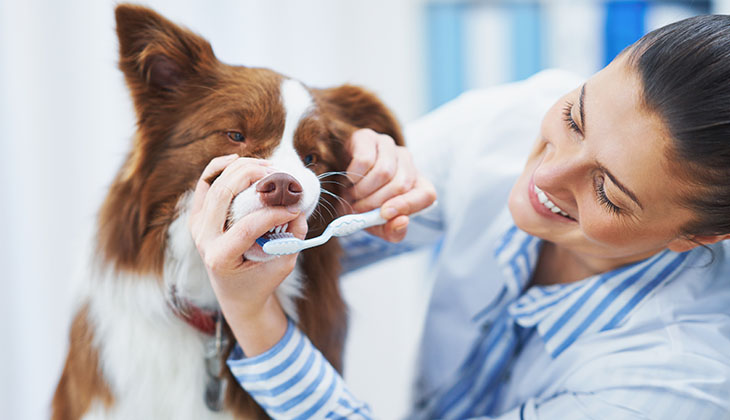
How exactly do I brush my pet’s teeth?
While it is usually best to start a daily brushing routine when your pet is younger, even older dogs and cats can be trained to accept tooth brushing, if you introduce the activity gradually and make it a positive experience for your pet. Always reward your pet once you finish brushing so he or she will continue to allow you to do it.
Here’s how you can get it done:
1: Start by dipping a finger in warm water. Gently rub your finger over your pet’s gums and one or two teeth. Repeat until your pet seems comfortable with this activity.
2: Gradually insert a finger wrapped in gauze and gently rub the teeth in a circular motion
3: Now you can start using a toothbrush, either an ultra-soft toothbrush designed for people (children’s toothbrushes work well in cats) or a special pet brush or thimble brush (a rubberized fingertip cover that has bristles)
4: Finally, once your pet gets used to brushing, start using a pet toothpaste. Most contain chlorhexidine (ask your vet to recommend one). Don’t use human toothpaste as it may upset your pet’s stomach. There are also antiseptic sprays or rinses to use after brushing.
Although dental disease is common in dogs and cats, proper dental care can keep your pet’s mouth as healthy as possible!
ZA-NON-220700005
RECOMMENDED
RELATED POSTS
-

Learn about canine babesiosis, a tick-borne disease that affects dogs worldwide. Discover its symptoms, treatments, and how to prevent it.
-
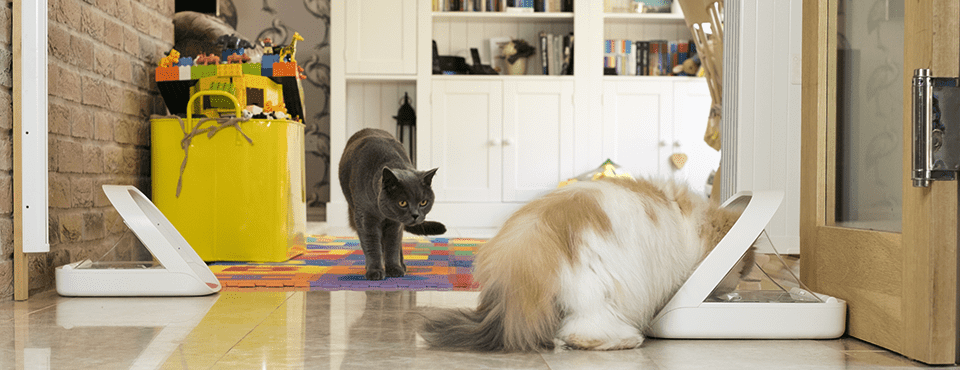
Explore how diabetes impacts cats, its signs, risk factors, and effective management through medication and diet for a healthier feline life.
-
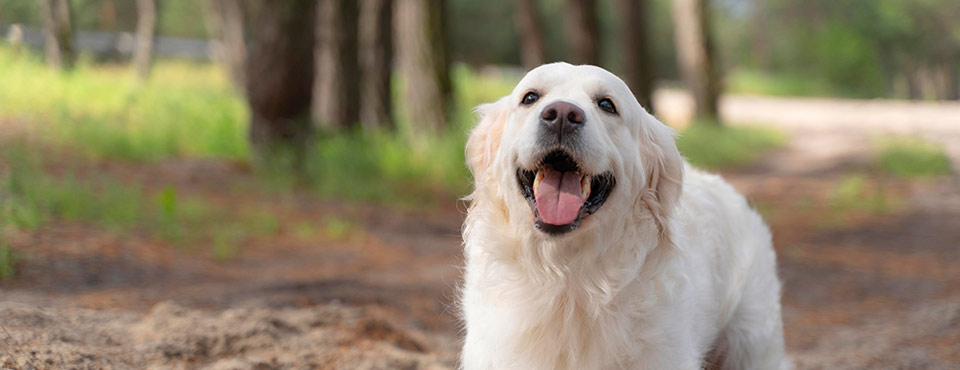
Diabetes affects an estimated 1 in 300 dogs, diabetes is more common in middle-aged and older dogs (4-14 years of age), it can be diagnosed in dogs of any age, including young dogs. Read more.
-
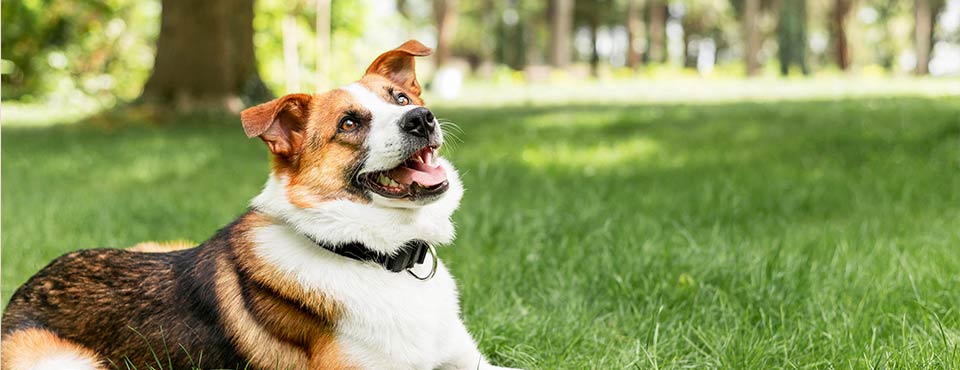
Ever wonder how your dog experiences the world? Why he or she sniffs everything, everywhere? Read more and find out






